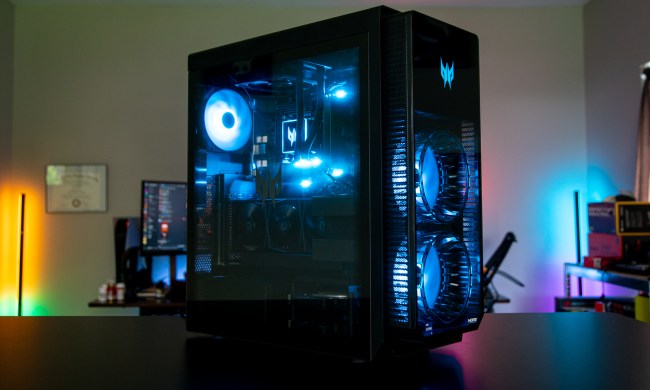
Microsoft recently revealed the HoloLens 2 Mixed Reality headset at Mobile World Congress, and it features double the field of view of the original version, but there could be even bigger things ahead. In an interview with Australian Financial Review, HoloLens inventor Alex Kipman hints that Microsoft is working toward developing a headset that will resemble reading glasses, with an infinite field of view.
In his talk with the publication, Kipman notes that Microsoft’s team can eventually develop a headset that matches a human’s field of view. It would be accomplished by what Kipman is referring to as “foveated rendering,” something not yet available on the current HoloLens. This technique would allow holograms to appear in high quality only in the direct view of a HoloLens wearer, but then dissipate as they move into the corners of the viewer’s eyesight. This would represent an improvement over the current generation HoloLens, where holograms projected through the headset fade as the user moves closer to them.
Microsoft’s HoloLens 2 headset already leverages both eye tracking as well as the equivalent of two 2K monitors to improve on a field of view. Kipman tells Financial Times that both of these are elements that can eventually lead to an infinite field of view, but notes that “users will have to wait for HoloLens 3 before they see the results.”
“Do that a few more times and you’re talking about wearing a pair of glasses,” said Kipman. “We’re incrementing forwards, to get toward what ultimately will be like a pair of reading glasses with an infinite field of view.”
While it may not have an infinite field of view at present, HoloLens 2 does brings some key improvements over the first generation. It can recognize hands and create fully articulated representations of them in the 3D virtual world. Compared to the last generation, it is much lighter, and more comfortable to wear, with the front being made of carbon fiber. The headset is powered by the Qualcomm Snapdragon 850 chipset and will be priced at $3,500. There has yet to be a time frame for release, but it likely will only be available to enterprises and developers, and out of reach for the general consumer for now.


